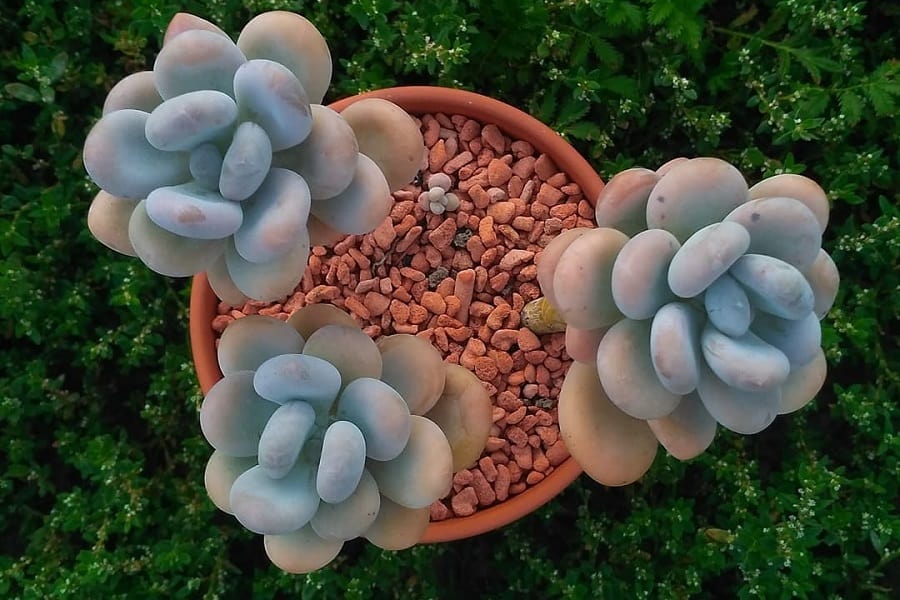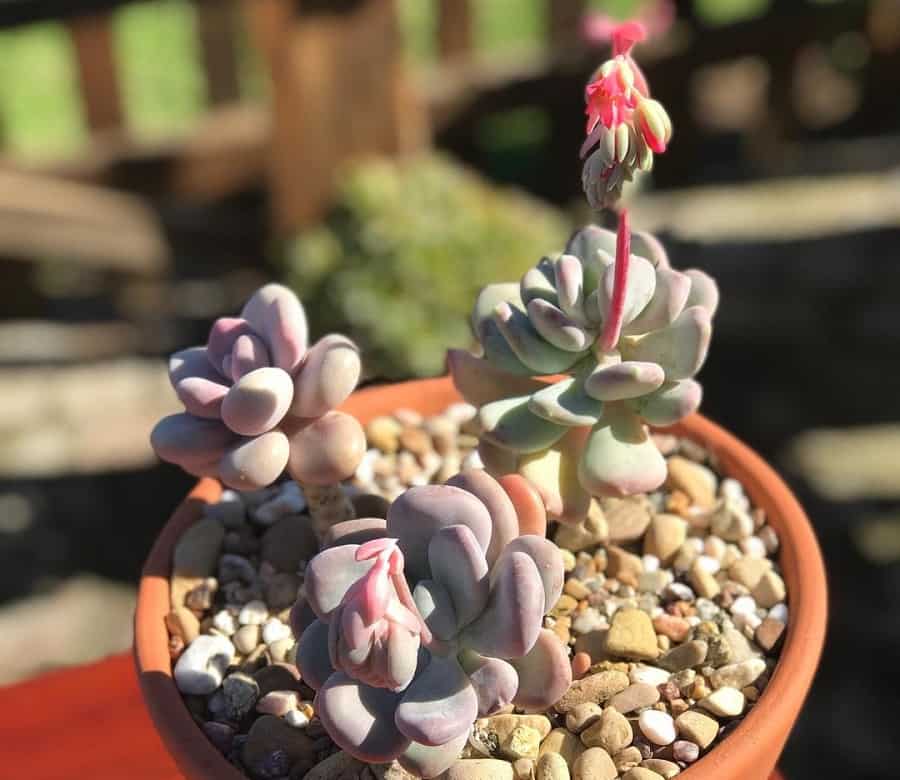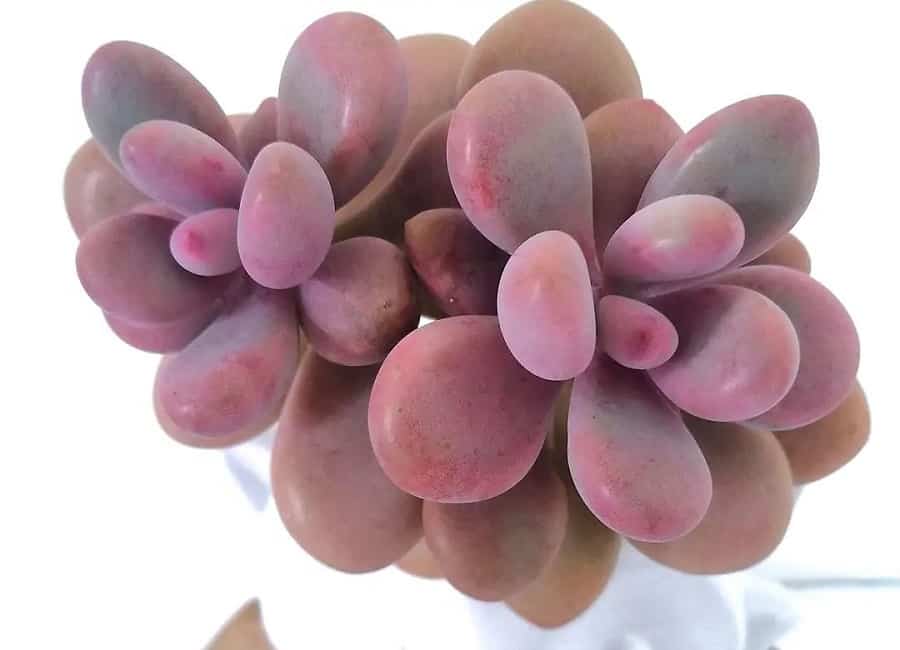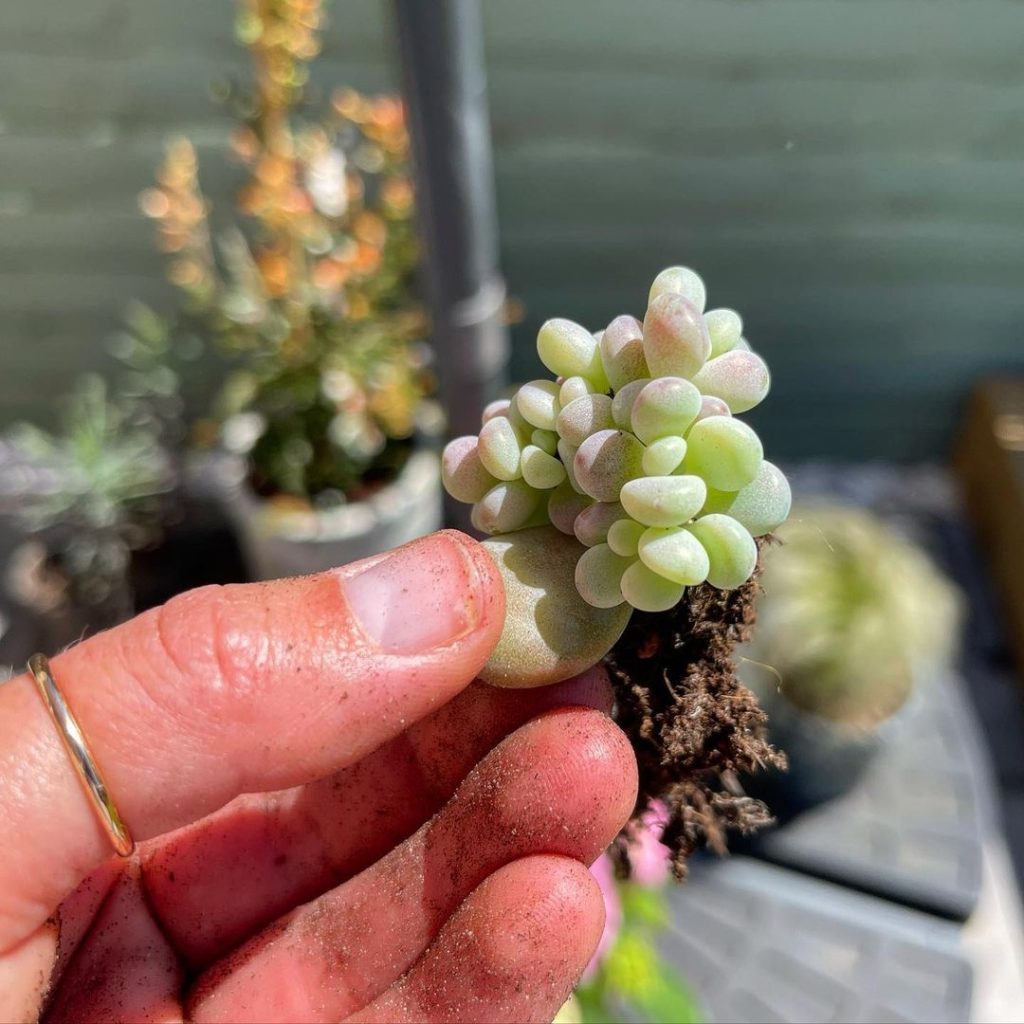Pachyphytum Moonstones 101: Care and Propagation Simplified
Pachyphytum Moonstones (Pachyphytum oviferum), commonly known as the moonstone succulent, are unique succulent plants native to Mexico. They have round, bluish-purple leaves that resemble actual moonstones and grow closely together in a rosette shape. During winter and spring, these plants produce vibrant red and orange flowers with long stems reaching up to 12 inches. Join us as we explore how to care for and propagate these enchanting succulents, and discover the beauty and joy they bring to any garden or indoor space. Get ready to embark on a journey of gardening inspiration with Pachyphytum Moonstones!

Related Post:
14 Types of Pachyphytum [With Pictures]
Contents
How To Care For Pachyphytum Moonstones
Pachyphytum Moonstones are easy-to-care-for houseplants with lovely leaves, making them a popular choice for decoration. Here are some simple tips to keep them happy and healthy:
Light
Pachyphytum Moonstones thrive in natural sunlight. Whether grown outdoors or indoors, make sure they receive some sunlight every day. They can tolerate direct morning sunlight, but beware of the intense afternoon sun, which can harm the leaves. If you have an outdoor plant, protect it with a sheet during intense sunlight. For indoor plants, place them in a spot with partial sunlight throughout the day.
Related Posts:
How Much Light Do Succulents Need?
Best Grow Light for Succulents
Water
Like most succulents, Pachyphytum Moonstones are sensitive to overwatering. They can withstand some underwatering but should never be overly dry. Overwatering can cause root rot, while underwatering leads to wilted leaves. Water the plant only when the top four inches of soil are dry. If the leaves look plump, it means there’s enough water stored, so refrain from watering. Avoid getting water on the leaves to prevent rotting and damage. In summer, water every five to seven days, and increase watering during the plant’s active growth in winter.
Related Post:
How Often to Water Succulents?
Soil

Pachyphytum Moonstones require well-drained soil. You can purchase a succulent potting mix or create your own by combining regular potting soil, sand, and perlite or pumice. The goal is to prevent water from accumulating around the roots.
Related Posts:
Best Soil for Succulents in Pots
How to Make Succulent Soil
Climate
These plants are native to hot climates and can tolerate high heat. However, they are sensitive to cold temperatures and can die in frost conditions. Avoid exposing them to temperatures below 45 degrees Fahrenheit for extended periods. Frost protection, such as covering the plant with a sheet, is necessary during winter months to safeguard outdoor plants.
Fertilizer
Pachyphytum Moonstones benefit from monthly fertilization during their active growth phase. Dilute succulent fertilizers and apply them to the soil.

Potting and Repotting
Plant your Pachyphytum Moonstones in well-drained soil using a container with drainage holes. Repotting is necessary only once every two years since the roots grow slower than the leaves. April is an ideal time to repot the plant.
Propagation

To propagate new Pachyphytum Moonstones, take leaf cuttings from the center of the rosettes. Let the cut leaves dry for about a day, then dip them in a rooting mixture and plant them in moist soil. The leaf cuttings will develop into new rosettes with their own roots. Transplant them into well-drained soil when ready.
Related Posts:
How Long Does It Take to Propagate Succulents?
